Many kinds of Birds live in Svalbard. Norwegian archipelago Svalbard is situated between the mainland of Norway and the North Pole. It’s an ideal habitat for many birds for their breeding. During the Breeding season, a large number of birds come here.
It has fewer predators, a large food resource, and a good environment, hence ideal for the birds during breeding. From Common Ringed Plover to Great Skua, you’ll find many of them here.
1. Great Skua
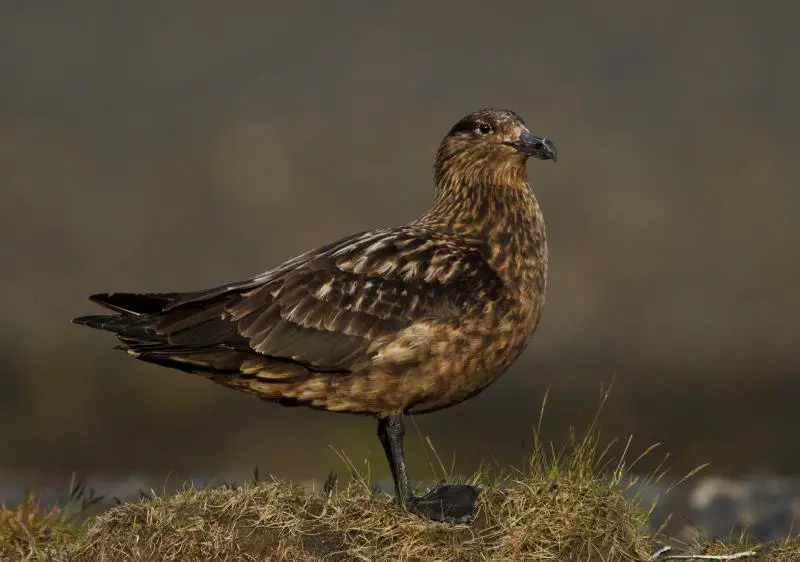
The Great Skua is a large sea bird belonging to the family Stercorariidae, found in areas such as Faroe Islands and Iceland.
It has a size similar to that of herring gulls, with its diet consisting mainly of fish caught at the surface or taken from other birds.
This species was first described by Danish zoologist Morten Thrane Brünnich in 1764 under the name Cath.
They are powerful predators who will sometimes use mobbing tactics against larger prey like gannets and eiders until they give up their catch.
These birds mate for life but may build nests near colonies if there aren’t enough suitable territories available on their own island range.
Although these skuas might seem intimidating due to their fierce nature when protecting young, they can be quite timid around humans so should not be approached too closely.Scientific classification:
| Kingdom | Animalia |
| Phylum | Chordata |
| Class | Aves |
| Order | Charadriiformes |
| Family | Stercorariidae |
| Genus | Stercorarius |
| Species | S. skua |
Also Featured In: Beautiful Brazilian Birds, Most Common Scotland Birds
2. Common Ringed Plover
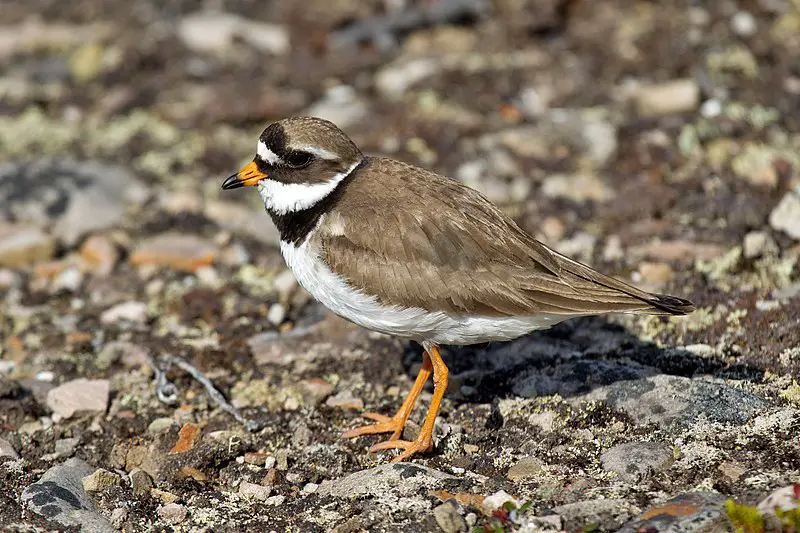
The Common Ringed Plover is a small migratory bird found in Arctic Eurasia. It has yellowish feathers and its Latin name, Charadrius hiaticula, means ‘bird of ravines’.
This species breeds on beaches and tundra during northern summer months before flying south when winter arrives.
Its diet consists mostly of insects which it catches by running along the shoreline or through shallow water with wings spread open to create a shadow that helps catch prey.
The common ringed plover nests in short grasses near water’s edge where they lay two eggs per clutch which hatch within three weeks.
These birds are highly territorial so will often defend their patch fiercely against competitors.Scientific classification:
| Kingdom | Animalia |
| Phylum | Chordata |
| Class | Aves |
| Order | Charadriiformes |
| Family | Charadriidae |
| Genus | Charadrius |
| Species | C. hiaticula |
Also Featured In: Egyptian Birds, Shetland Islands Birds You Should Know
3. Barnacle Goose
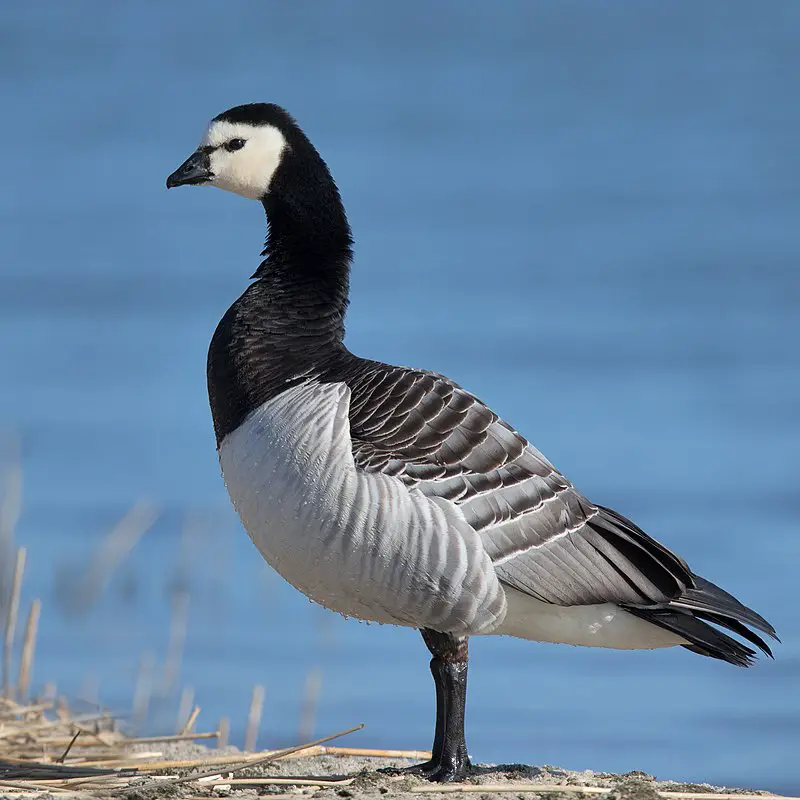
The Barnacle Goose is a species of black goose from the Branta genus. It has mostly black plumage and can be distinguished from other types of geese, such as grey Anser species, by its unique colouring.
This bird was first classified taxonomically in 1758 and genetic studies have recently revealed that it is actually related to the Cackling Goose lineage rather than brant geese which it bears resemblance to.
The barnacle goose lives all around northern Europe during winter months but travels further north into Greenland or Svalbard for breeding season when they will lay eggs on cliffs close to water sources so their young ones may take advantage of food-rich waters below them easily after hatching.Scientific classification:
| Kingdom | Animalia |
| Phylum | Chordata |
| Class | Aves |
| Order | Anseriformes |
| Family | Anatidae |
| Genus | Branta |
| Species | B. leucopsis |
Also Featured In: Birds of United Kingdom, Flight Birds You Should Know
4. Parasitic Jaeger
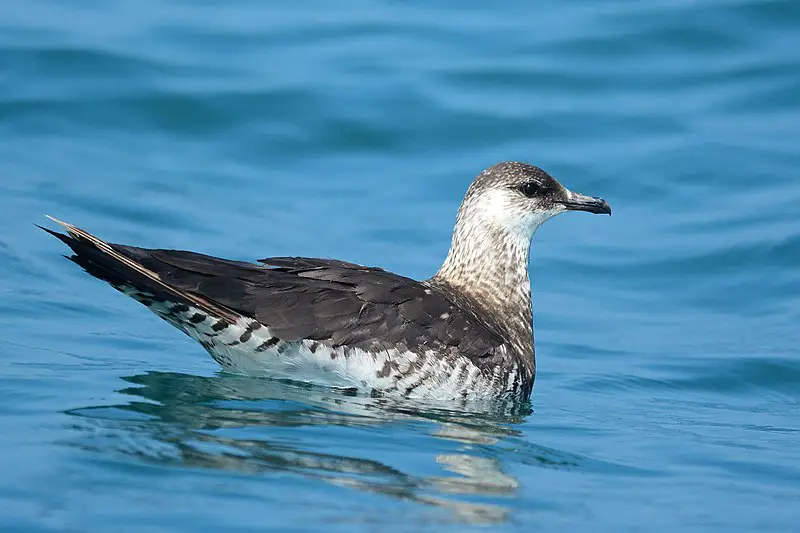
The Parasitic Jaeger is a migratory bird that breeds in cold climates of Northern Scandinavia, Scotland, Iceland, Greenland and parts of Canada, Alaska and Siberia.
During the breeding season it feeds primarily on kleptoparasitism – stealing food from other birds.
In winter they migrate to warmer regions across the southern hemisphere where they feed mainly by scavenging off fish or carrion left behind by fishing boats or whales.
This species is easily identified by its brownish-gray plumage with white patches on its wings and tail feathers as well as yellow eyes which are quite distinctive among skuas.
The parasitic jaeger has adapted to many different habitats ranging from coastal areas to inland lakes making them an interesting species to watch out for while exploring nature.Scientific classification:
| Kingdom | Animalia |
| Phylum | Chordata |
| Class | Aves |
| Order | Charadriiformes |
| Family | Stercorariidae |
| Genus | Stercorarius |
| Species | S. parasiticus |
Also Featured In: Birds that Live in Faroe Islands, Common Birds of Portugal
5. Black Guillemot
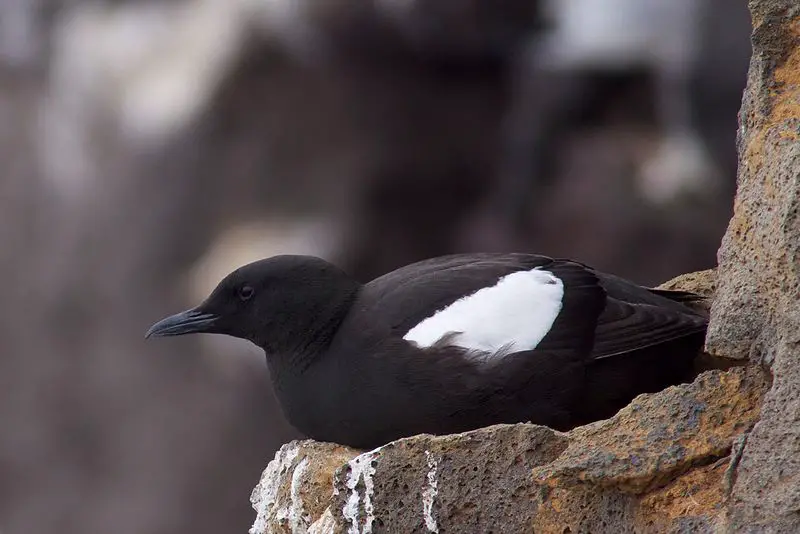
The Black Guillemot is a striking seabird found throughout the northern Atlantic coasts and eastern North American coasts. It has black feathers with white underparts, a red bill, and bright yellow feet.
They live around rocky shores, cliffs, and islands in single or small groups.
During winter months they migrate southwards from their high arctic breeding grounds to search for food sources such as fish eggs or invertebrates like shrimp that can be caught near shorelines.
Their diet also includes seeds and berries during summertime when they are nesting on coastal ledges creating burrows where they lay up to four pastel-colored eggs at once.
These amazing birds are very efficient swimmers using both their wings and webbed feet to propel themselves through water quickly while hunting prey.Scientific classification:
| Kingdom | Animalia |
| Phylum | Chordata |
| Class | Aves |
| Order | Charadriiformes |
| Family | Alcidae |
| Genus | Cepphus |
| Species | C. grylle |
Also Featured In: Birds of Orkney, Acadia National Park Birds
6. Red-Throated Loon
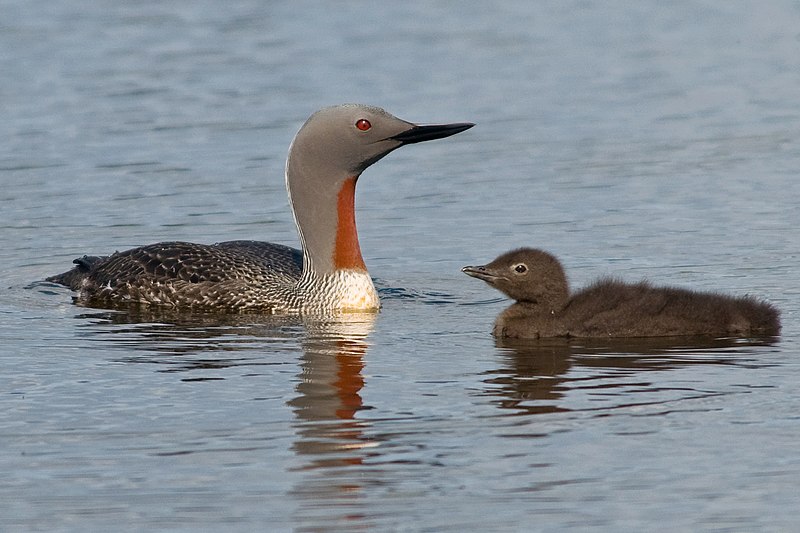
The Red-throated Loon is a migratory bird found in the northern hemisphere, with its breeding grounds primarily located in Arctic regions and wintering spots near coastal waters.
With an average length of 55 – 67 cm (22 – 26 inches), it’s the smallest member of the loon or diver family.
Its namesake comes from its bright red throat patch which contrasts against its white underside and grey back.
This species has adapted to life on icy seas; they are strong swimmers with powerful wings for long flights over open water when migrating seasonally.
Their diet consists mostly of fish but can also include crustaceans, molluscs, amphibians and insects depending on availability.Scientific classification:
| Kingdom | Animalia |
| Phylum | Chordata |
| Class | Aves |
| Order | Gaviiformes |
| Family | Gaviidae |
| Genus | Gavia |
| Species | G. stellata |
Also Featured In: Native South Korean Birds, Turkey Birds You Should Know
7. Common Eider
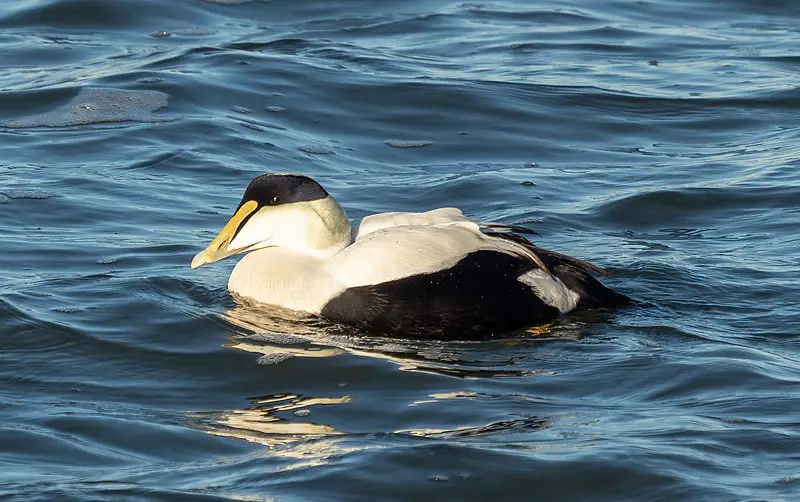
The Common Eider is a large sea-duck that inhabits coasts of Europe, North America and eastern Siberia.
It breeds in arctic regions as well as some northern temperate climates but travels further south during the winter months to form flocks with other ducks in temperate zones.
These birds are easily recognised by their characteristic black and white markings on their wings which can be seen when they take flight.
They have light brown bodies topped off with bright yellowish coloured heads making them quite striking creatures.
The eiders feed mainly on molluscs such as clams, mussels, snails and worms found at the bottom of shallow coastal waters or tidal flats.
Their diet helps improve water quality through natural filtering processes carried out by foraging for food underwater which benefits local marine ecosystems immensely.Scientific classification:
| Kingdom | Animalia |
| Phylum | Chordata |
| Class | Aves |
| Order | Anseriformes |
| Family | Anatidae |
| Genus | Somateria |
| Species | S. mollissima |
Also Featured In: Common Birds in Canada, Common Birds Found in Wrangel Island
8. Purple Sandpiper
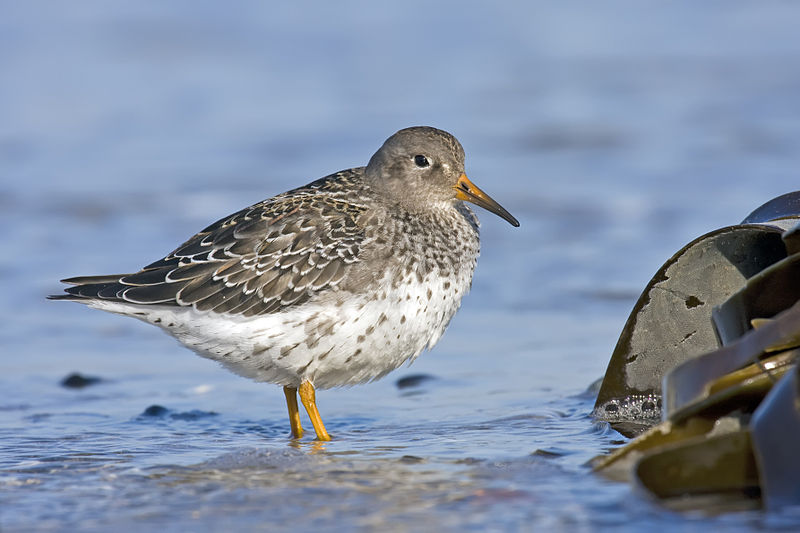
The Purple Sandpiper is a small shorebird of the Scolopacidae family, found in arctic and subarctic regions of Eurasia and North America. In winter it migrates south to the Atlantic coast for warmer temperatures.
It was formally described by Danish zoologist Morten Thrane Brünnich back in 1764 as Tringa maratina.
Generally grayish-brown with purple highlights on its head, neck and wings when seen from afar, this bird has white underparts that contrast beautifully against its darker feathers while standing out prominently against snow or ice covered landscapes during winters.
Its diet consists mainly of insects but also includes seeds, worms and other invertebrates which they search for along rocky shores or mudflats near ocean coasts throughout their range.Scientific classification:
| Kingdom | Animalia |
| Phylum | Chordata |
| Class | Aves |
| Order | Charadriiformes |
| Family | Scolopacidae |
| Genus | Calidris |
| Species | C. maritima |
Also Featured In: Birds of Netherlands, Autumn Birds You Should Know
9. Black-Legged Kittiwake
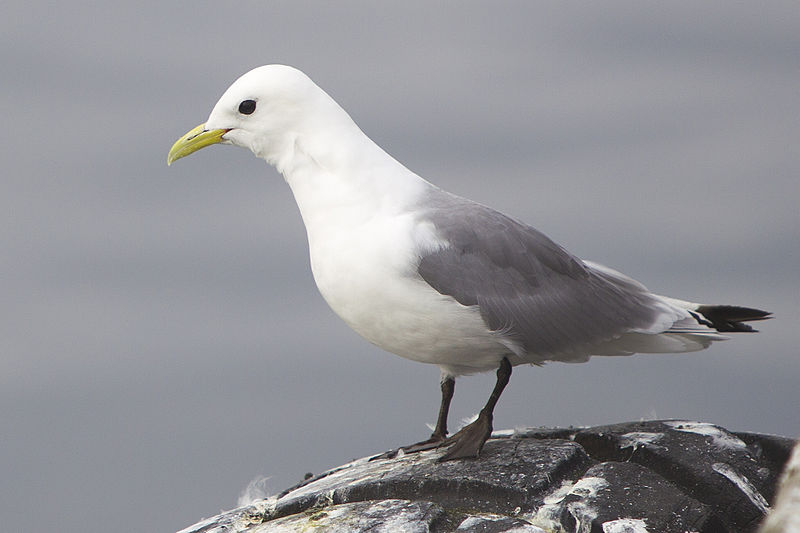
The Black-legged Kittiwake is a seabird of the gull family Laridae. It was first described by Carl Linnaeus in 1758 and its name derives from its distinctive call which sounds like ‘kittee-wa-aaake, kitte-wa-aaake’.
These birds are mainly found along coastal regions with plenty of food sources such as plankton and fish. They have white bodies with slate grey wings and black legs.
The bill is yellowish orange to red depending on age or season.
In winter they migrate southwards away from their northern habitats into warmer waters for breeding purposes before returning again once spring arrives.Scientific classification:
| Kingdom | Animalia |
| Phylum | Chordata |
| Class | Aves |
| Order | Charadriiformes |
| Family | Laridae |
| Genus | Rissa |
| Species | R. tridactyla |
Also Featured In: Common Cornwall Birds, Common Blue Birds of Georgia
10. Red Phalarope
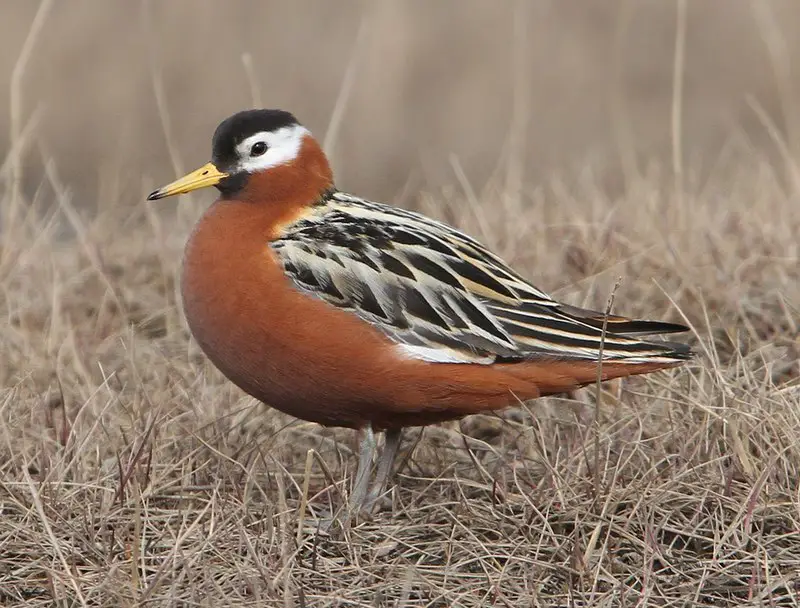
The Red Phalarope (Phalaropus fulicarius) is a small wader, native to the Arctic regions of North America and Eurasia.
During breeding season it will migrate across oceanic routes and winter at sea on tropical oceans – an unusual behaviour for a wader species.
First described in 1750 by George Edwards, this bird has distinctive red plumage with black markings around its neck and wings.
Its bill is thin but sharp which helps them catch their prey from the water’s surface such as insects or fish eggs.
As they are highly agile birds, they can be found spinning rapidly in shallow waters whilst searching for food using their long toes as paddles.Scientific classification:
| Kingdom | Animalia |
| Phylum | Chordata |
| Class | Aves |
| Order | Charadriiformes |
| Family | Scolopacidae |
| Genus | Phalaropus |
| Species | P. fulicarius |
Also Featured In: Kyrgyzstan Birds, Birds that Live near Bering Island
11. Glaucous Gull
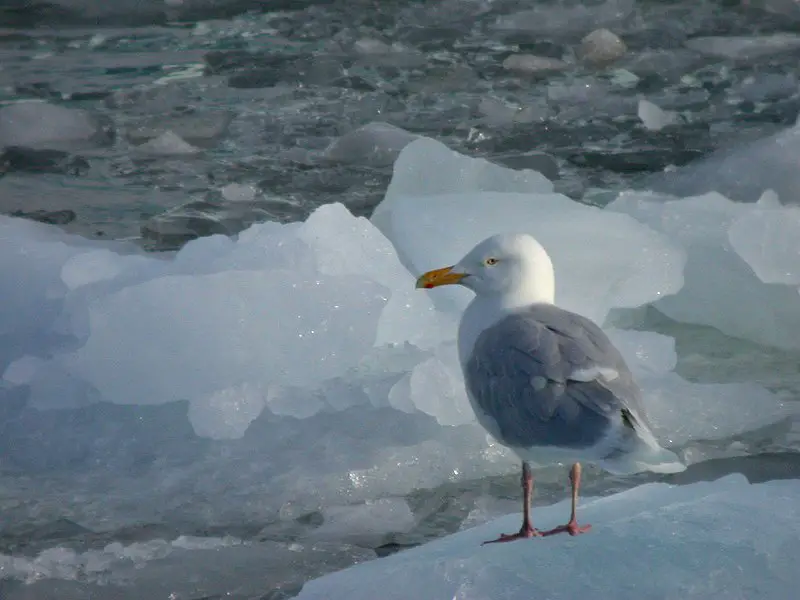
The Glaucous Gull is a majestic species of bird which can be found in the Arctic regions of the Northern Hemisphere.
It has an impressive wingspan, being one of the largest gulls in existence and second only to The Great Black-Backed Gull.
During winter months they migrate southwards towards coasts along Holarctic shores where their presence is seen as far down as South Africa.
Their genus name ‘Larus’, from Latin origins, likely refers to some kind of seabird while its specific name ‘hyperboreus’ derives from Greek for “northern”, referencing Ancient Greeks who lived near what became known as North Pole.
This stunning avian species makes them an unforgettable sight on any journey northward or through coastal areas throughout much of Europe and Asia.Scientific classification:
| Kingdom | Animalia |
| Phylum | Chordata |
| Class | Aves |
| Order | Charadriiformes |
| Family | Laridae |
| Genus | Larus |
| Species | L. hyperboreus |
Also Featured In: Norway Birds, Large Birds of Michigan
12. Iceland Gull
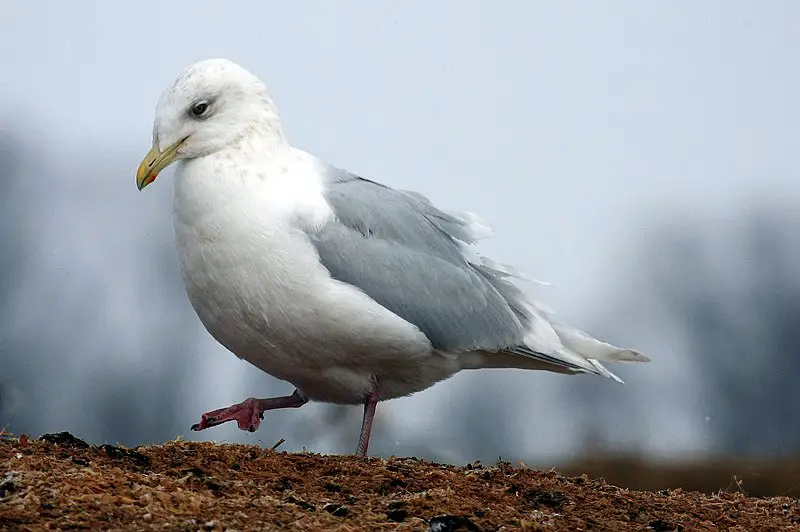
The Iceland Gull is a medium-sized, Arctic-dwelling gull whose range includes Canada and Greenland, but not its namesake.
Its gray wings are marked with black primaries and white tips on the inner secondary feathers which distinguishes it from other similar species like Larus hyperboreus which has completely white secondaries.
It feeds mainly by scavenging or kleptoparasitism – stealing food from other birds – as well as actively pursuing smaller prey such as crustaceans and insects in shallow waters near shorelines.
When breeding season arrives they nest atop rocky outcrops found along coastal areas to provide adequate protection against predators while also giving them an unobstructed view of their surroundings for when danger approaches.
The Iceland Gull can be seen during winter months visiting places like Iceland where temperatures remain more hospitable than its native habitat further north despite the cold weather.Scientific classification:
| Kingdom | Animalia |
| Phylum | Chordata |
| Class | Aves |
| Order | Charadriiformes |
| Family | Laridae |
| Genus | Larus |
| Species | L. glaucoides |
Also Featured In: Iceland birds, Birds That Live around Gull Rock
13. Pink-Footed Goose
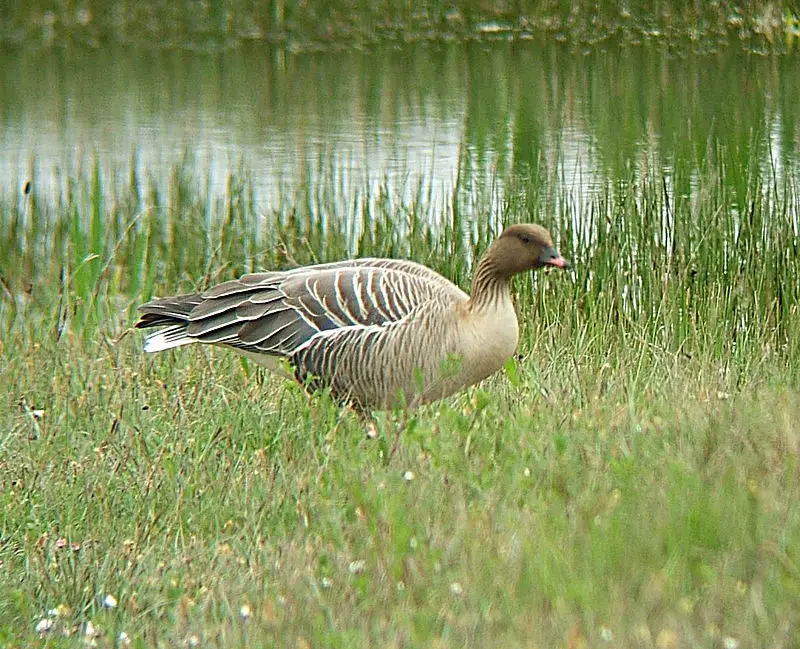
The Pink-footed Goose is a migratory bird which breeds in eastern Greenland, Iceland and Svalbard.
It spends the winter in northwest Europe such as Ireland, Great Britain, Netherlands and western Denmark.
Its name comes from combining Latin for “goose” with ancient Greek words meaning ‘short beak’.
This species has pink legs and feet along with an orange bill. They have grey-brown upperparts and white underparts making them easy to identify amongst other geese.
Their diet consists mainly of grasses but they also eat grains like wheat or barley when available.
The population size of this species is increasing due to conservation efforts made by many countries across Europe who are dedicated to protecting these birds throughout their migration journey each year.Scientific classification:
| Kingdom | Animalia |
| Phylum | Chordata |
| Class | Aves |
| Order | Anseriformes |
| Family | Anatidae |
| Genus | Anser |
| Species | A. brachyrhynchus |
Also Featured In: Most Common Birds of Netherlands Island, Jersey Island Birds You Should Know
14. Northern Fulmar
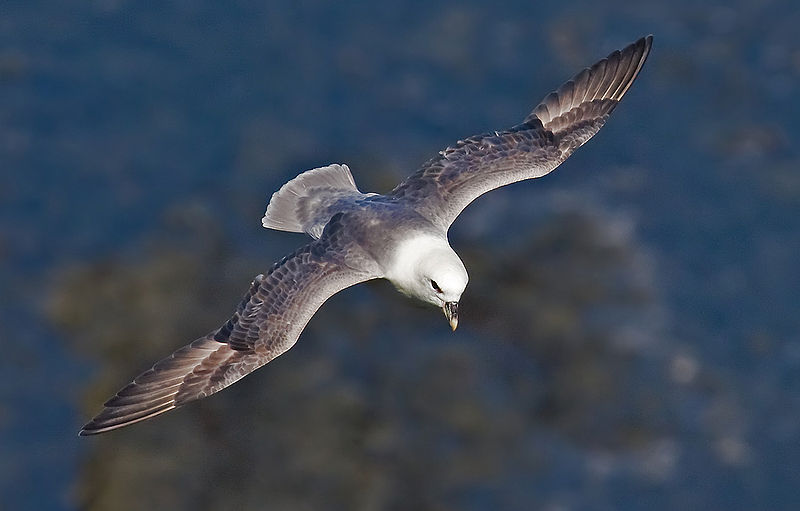
The Northern Fulmar is a seabird that resides in the subarctic regions of the North Atlantic and North Pacific oceans. It has one distinctive color morph: white head and body, along with gray wings.
This bird had been seen only once in Southern Hemisphere south from New Zealand due to its habitat preferences.
Its diet includes fish eggs, crustaceans, small squid and other marine animals which they consume while flying over water surface or when swimming on sea’s top layer looking for food.
The Fulmar also scavenges carrion, especially during breeding season as their chicks need more nutrition than adult birds do.
They are highly abundant species so no conservation measures have been taken yet but monitoring them helps us understand population dynamics better.Scientific classification:
| Kingdom | Animalia |
| Phylum | Chordata |
| Class | Aves |
| Order | Procellariiformes |
| Family | Procellariidae |
| Genus | Fulmarus |
| Species | F. glacialis |
Also Featured In: Birds that Live in the Ocean , Most Common Birds of Farallon Islands
15. Snow Bunting
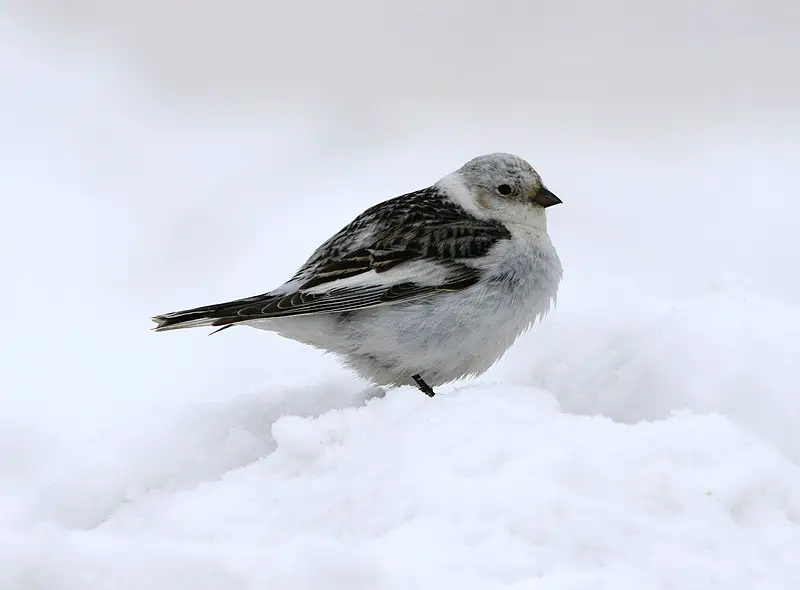
The snow bunting is a small and colourful passerine bird found in the Arctic regions of the northern hemisphere.
With its bright white feathers, black markings on its wings and tail, it stands out amongst other birds that inhabit these cold climates.
This species has adapted well to surviving in this harsh environment; they nest under boulders or rocks so their eggs are shielded from predators and blizzards alike.
They feed mainly on insects during summer months but switch to seeds when winter arrives as they seek food sources which will not freeze over with ice.
The snow bunting is an important part of the local ecosystem due to providing sustenance for larger animals such as foxes and owls who rely upon them for survival throughout wintertime.Scientific classification:
| Kingdom | Animalia |
| Phylum | Chordata |
| Class | Aves |
| Order | Passeriformes |
| Family | Calcariidae |
| Genus | Plectrophenax |
| Species | P. nivalis |
Also Featured In: Most Common Winter Birds, Flocks Birds around Us
16. Little Auk
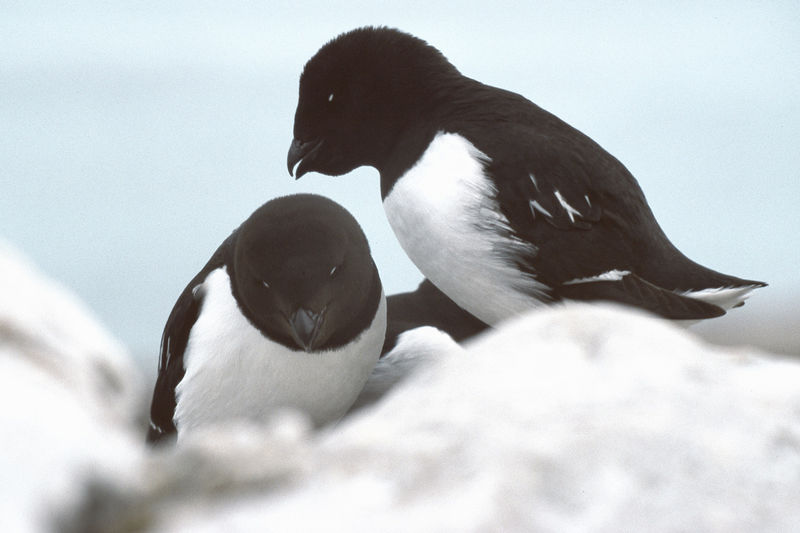
The Little Auk, also known as the Dovekie or Alle alle is a small but mighty bird. It has an unmistakable call that sounds like “alle” and is how it gets its name – taken from the Sami language of northern Scandinavia.
These birds are found in large flocks during winter months where they migrate to far north polar regions for feeding on fish, molluscs and crustaceans.
They nest near coasts in rocky areas with low vegetation cover making them difficult to spot amongst their natural habitat.
With numbers declining due to overfishing it’s important we take steps towards protecting this beautiful species so future generations can enjoy these little creatures too.Scientific classification:
| Kingdom | Animalia |
| Phylum | Chordata |
| Class | Aves |
| Order | Charadriiformes |
| Family | Alcidae |
| Genus | Alle Link, 1806 |
| Species | A. alle |
Also Featured In: Auks Species, Birds You’ll Find in the Sea
17. Thick-Billed Murre
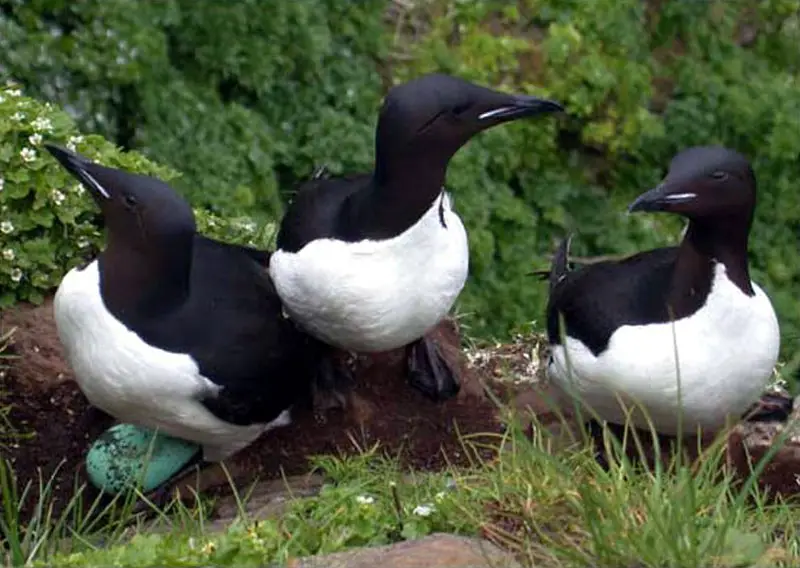
The Thick-Billed Murre is a species of seabird in the Auk family. It is named after Danish zoologist Morten Thrane Brünnich, and nicknamed Pallas’ murre by some.
These birds have black plumage with white underparts, a thick bill and short wings which makes them excellent swimmers but poor flyers.
They can often be seen perched on cliffs or floating together at sea where they feed mainly on fish and mollusks.
The Thick-Billed Murres nest in colonies along coastal areas, laying their eggs directly onto rocky terrain or ledges instead of nests like other bird species do.
This tough little bird has been known to survive harsh arctic winters as well.Scientific classification:
| Kingdom | Animalia |
| Phylum | Chordata |
| Class | Aves |
| Order | Charadriiformes |
| Family | Alcidae |
| Genus | Uria |
| Species | U. lomvia |
Also Featured In: Birds that Live in Newfoundland and Labrador, Birds that Live in Greenland
18. King Eider
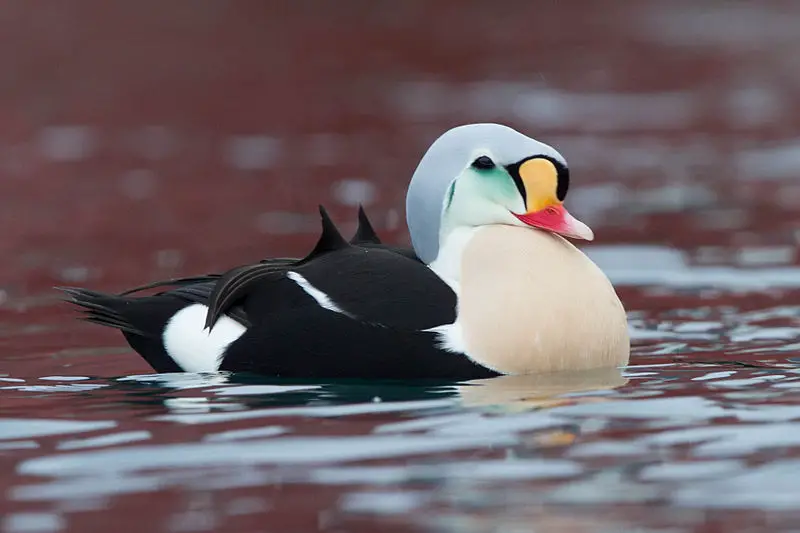
The King Eider is a large sea duck found in the Northern Hemisphere Arctic coasts of Northeast Europe, North America and Asia.
It spends most of its year near coastal marine ecosystems at high latitudes before migrating to tundra for breeding season from June to July.
During this time they lay four to seven eggs in grass-lined nests on the ground with downy feathers as additional insulation.
These beautiful birds are renowned for their attractive plumage which consists of shades of white and black, often with bright orange or green patches around the head region.
They have wide wings that help them fly through long migrations each year while also providing protection against predators like foxes during nesting season.
The King Eider is an impressive species that has adapted well to life within its cold habitat over centuries.Scientific classification:
| Kingdom | Animalia |
| Phylum | Chordata |
| Class | Aves |
| Order | Anseriformes |
| Family | Anatidae |
| Genus | Somateria |
| Species | S. spectabilis |
Also Featured In: Maine Birds, Tundra Birds
19. Long-Tailed Jaeger
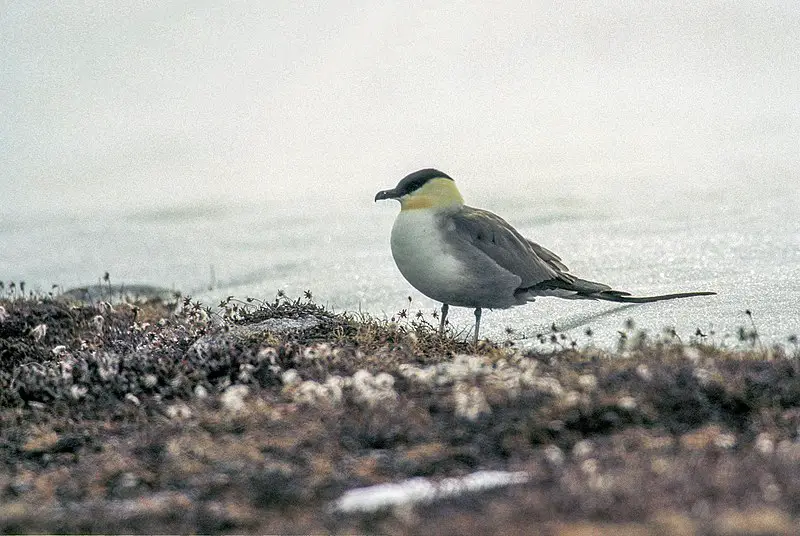
The long-tailed jaeger is a predatory seabird known for its slender, pointed wings and long, forked tail. It belongs to the skua family and is often referred to as a “hunter” due to its hunting prowess.
The bird’s name derives from the Faroese name for the great skua, which is also called the “skúgvur”.
The long-tailed jaeger is usually found in Arctic regions and is known to migrate long distances. This bird is particularly skilled at robbing other birds of their catches and is often seen chasing gulls and terns.
The long-tailed jaeger has a brownish-grey plumage with a black cap and collar. It is a beautiful and impressive bird, known for its incredible flying skills and its tenacity when it comes to hunting.Scientific classification:
| Kingdom | Animalia |
| Phylum | Chordata |
| Class | Aves |
| Order | Charadriiformes |
| Family | Stercorariidae |
| Genus | Stercorarius |
| Species | S. longicaudus |
Also Featured In: Birds of Norfolk, Common Northwest Territories Birds
20. Pectoral Sandpiper
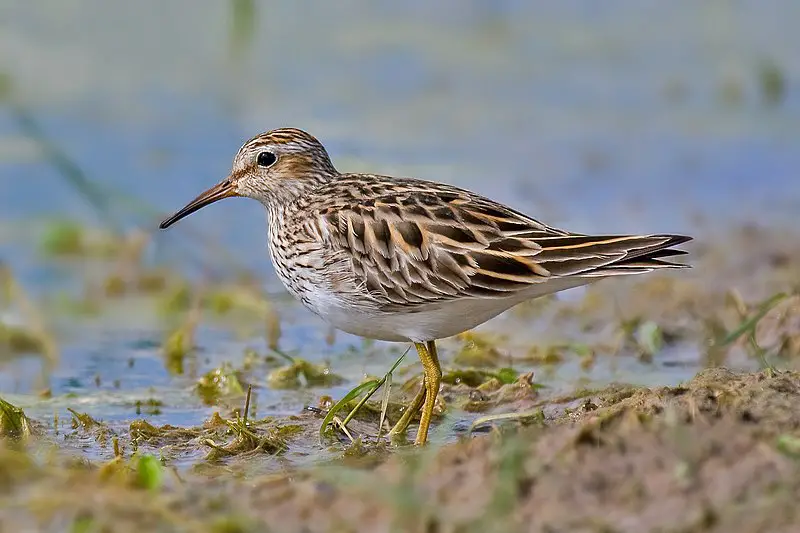
The Pectoral sandpiper is a migratory wader that can be found in North America and Asia, but can be seen in South America and Oceania during the winter.
This small bird primarily feeds on small invertebrates. It creates a deep hole in the ground lined with thick materials to protect its four eggs from harsh weather conditions during breeding.
Measuring 21 cm (8.3 in) in length and with a wingspan of 46, the Pectoral sandpiper is a small bird that is easy to spot.Scientific classification:
| Kingdom | Animalia |
| Phylum | Chordata |
| Class | Aves |
| Order | Charadriiformes |
| Family | Scolopacidae |
| Genus | Calidris |
| Species | C. melanotos |
Also Featured In: Birds That Live in Spitsbergen, Most Common Birds of Sierra Islands
21. Pomarine Jaeger
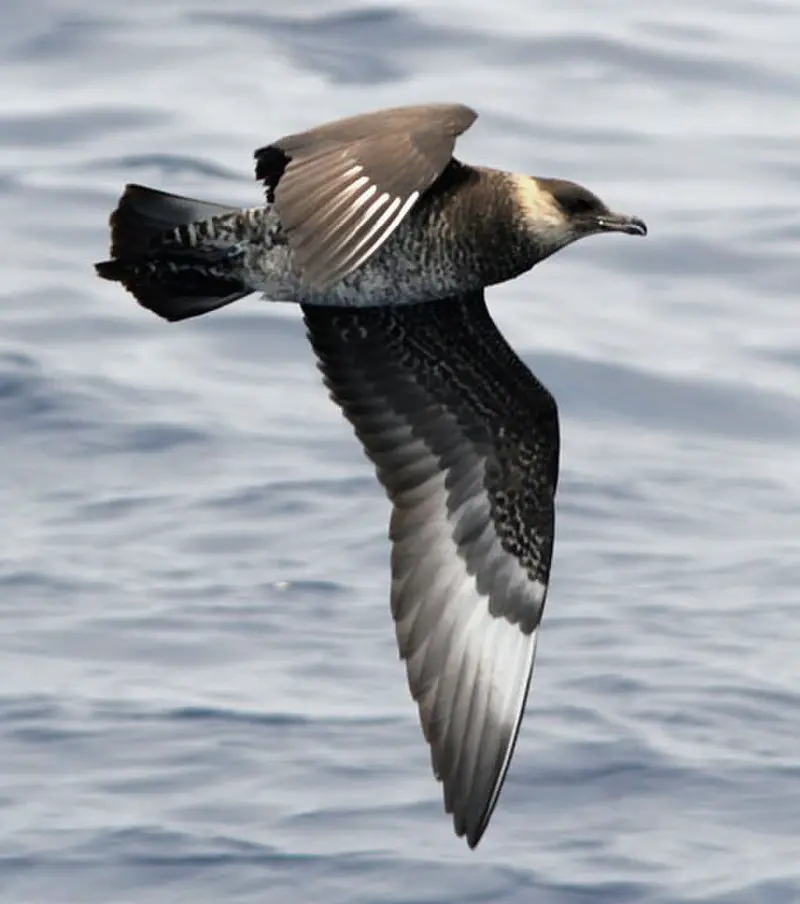
The Pomarine jaeger is a migratory seabird that belongs to the skua family Stercorariidae. It spends winter at sea in tropical oceans.
Although its relationships are not entirely understood, its mitochondrial DNA is most similar to the great skua while its behavior and morphology relate more to lesser skuas, such as the parasitic jaeger.
This bird’s distinctive features include a black cap and a thick, hooked bill that it uses to snatch fish from other seabirds.
It has a white belly and dark grey-brown plumage on its upper parts, making it easily recognizable as it reaps through the ocean in search of prey.
The Pomarine jaeger is a fascinating bird that plays an important role in maintaining the ecological balance of the ocean.Scientific classification:
| Kingdom | Animalia |
| Phylum | Chordata |
| Class | Aves |
| Order | Charadriiformes |
| Family | Stercorariidae |
| Genus | Stercorarius |
| Species | S. pomarinus |
Also Featured In: Martinique Island Birds You Should Know, Common Birds Found near Saint Helena